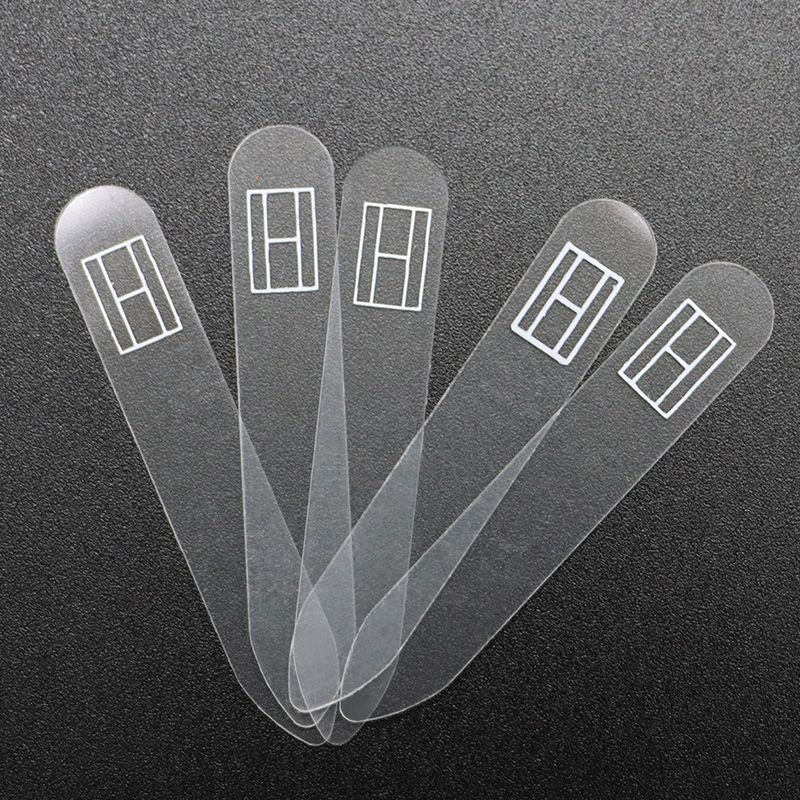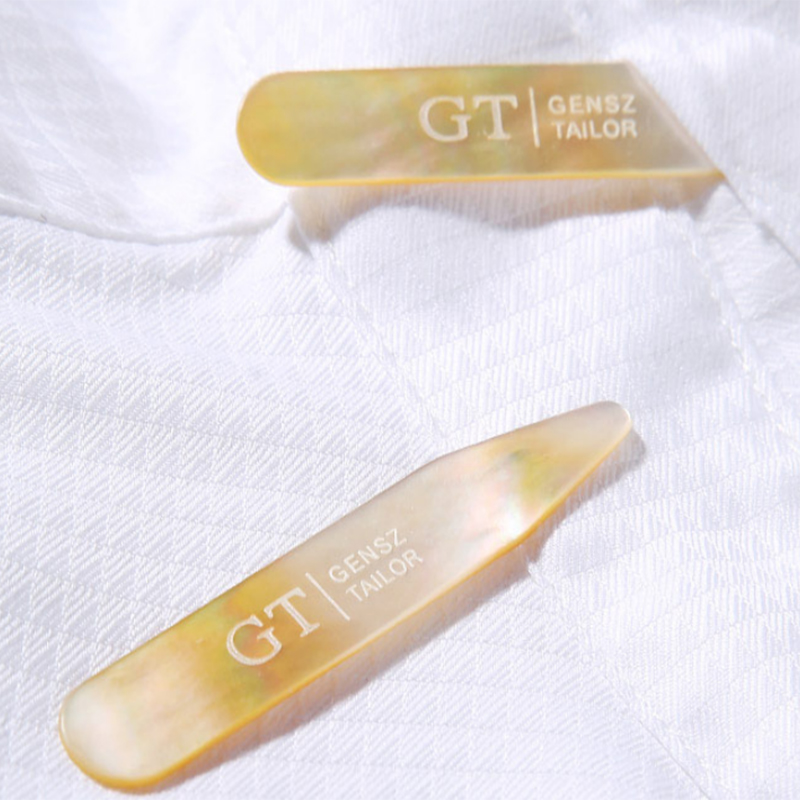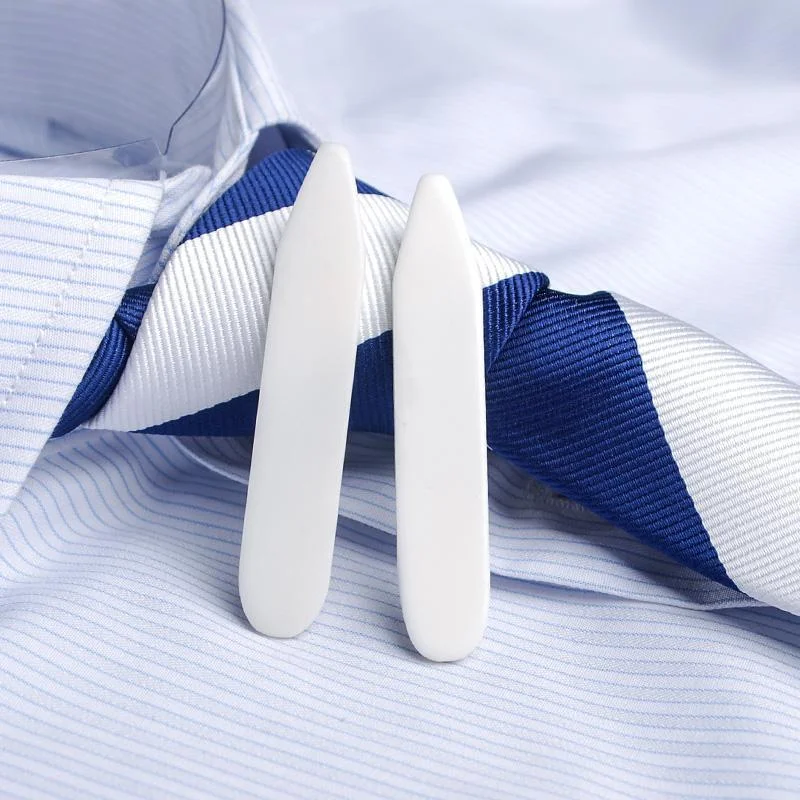What Exactly Are Plastic Collar Stays and Are They Right for You?
Collars looking a bit sad, but premium stays seem pricey? Understand plastic collar stays – the common, affordable option for maintaining a neat shirt appearance.
Plastic collar stays are thin, rigid inserts made from various types of plastic, designed to slide into shirt collar pockets. They offer a cost-effective way to help keep collar points from curling or collapsing.

Plastic collar stays
Plastic collar stays are often the first type we encounter, frequently included with new shirts. While ubiquitous, it’s worth understanding how they’re made, their specific characteristics, and their limitations. This will help you decide if they meet your needs or if you should explore other options for that perfectly crisp collar.
How are plastic collar stays actually made?
Ever wondered about those simple plastic tabs? Their production is quite straightforward. Discover the common manufacturing processes behind these ubiquitous shirt accessories.
Plastic collar stays are typically mass-produced using methods like injection molding, where molten plastic is forced into a mold, or die-cutting, where shapes are stamped from plastic sheets.
The manufacturing process for plastic collar stays is designed for efficiency and cost-effectiveness, which is why they are so widely available. The two primary methods are:
1. Injection Molding
This is a very common process for creating plastic parts.
- Process: Molten plastic (like polypropylene, PVC, or polystyrene) is injected under high pressure into a precisely machined mold cavity shaped like the collar stay.
- Cooling & Ejection: The plastic cools and solidifies, taking the shape of the mold. The finished stay is then ejected.
- Advantages: Allows for complex shapes (though collar stays are simple), high production volume, and consistency.
2. Die-Cutting / Stamping
This method is used for simpler, flat shapes.
- Process: A sharp die (a specialized cutting tool) is pressed through sheets of plastic material.
- Output: This punches out the collar stay shapes, similar to a cookie cutter.
- Advantages: Very fast for simple flat shapes, economical for large quantities.
Both methods result in smooth-edged stays ready for use, often with minimal finishing required.
What are the standout features of plastic collar stays?
Looking for basic collar support without breaking the bank? Plastic stays offer clear advantages. Their key features make them a practical, everyday choice for many.
snippet paragraph:
Plastic collar stays are prized for their affordability, good washability – less damaging if accidentally left in – and being lightweight, adding no bulk.
Plastic collar stays come with several distinct advantages, making them a popular choice, especially as the ones often included with new shirts. Your insights highlight these perfectly:
- 1. Affordability:
- As you noted, Plastic collar stays are simple to make and have low production costs, so their price is relatively affordable, making them the standard choice for most shirt brands. This low cost makes them easily replaceable and widely accessible.
- 2. Strong Washability:
- A significant practical benefit is their resilience in the wash. Plastic collar stays have good washability; even if you forget to remove them during use, they won’t cause too much damage to the shirt. While not recommended, they are less likely to rust or severely damage fabric compared to some metal stays if accidentally laundered.
- 3. Lightweight:
- Plastic collar stays are lightweight and won’t add too much weight to the collar. This ensures they don’t uncomfortably pull down on the collar fabric, maintaining a natural drape.
These features make them a functional, no-fuss option for daily wear.
What are the disadvantages of using plastic collar stays?
Are plastic stays falling short of giving you that super crisp collar? Their convenience comes with trade-offs. Consider these drawbacks before relying solely on them.
The main disadvantages include poorer rigidity compared to metal, meaning they may not keep collars as stiff, and a less premium texture/appearance.
While practical, plastic collar stays do have limitations, especially when compared to more premium materials. Your insights clearly outline these:
- 1. Poorer Rigidity:
- As you stated, " The rigidity of plastic collar stays is not as good as metal ones, and they may not be able to make the collar sufficiently crisp. Over time, or with thinner plastics, they can bend or lose their shape, failing to provide the firm support needed for a very sharp collar point, especially on heavier shirt fabrics.
- 2. Inferior Texture and Aesthetics :
- This is a matter of refinement. Compared to metal collar stays, plastic ones have a poorer texture and appear less elegant and sophisticated. They lack the weight, smooth finish, and premium feel of materials like metal, mother-of-pearl, or bone. For those who appreciate finer details, plastic can feel like a compromise.
- 3. Durability Issues:
- While they survive washing, plastic stays can become brittle over time, snap, or develop sharp edges if they break, potentially snagging fabric. They are generally seen as disposable rather than a long-term investment.
These disadvantages mean they are often seen as a basic, rather than optimal, solution for collar support.
Conclusion
Plastic collar stays are affordable, washable, and lightweight. However, they offer less rigidity and a less premium feel compared to other materials like metal or shell.







